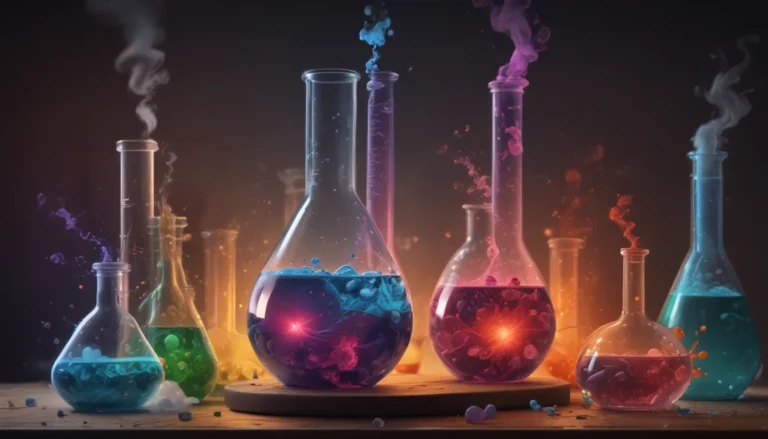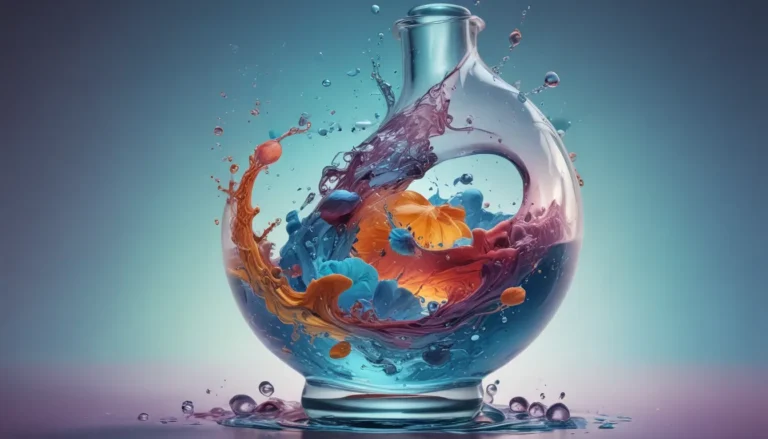A Note About Images: The images used in our articles are for illustration purposes only and may not exactly match the content. They are meant to engage readers, but the text should be relied upon for accurate information.
Are you ready to embark on an intriguing journey into the captivating world of surface defects? In this article, we will uncover 19 unbelievable facts about surface defects that will expand your knowledge and curiosity in the field of Chemistry. From natural occurrences to manufacturing mishaps, surface defects play a vital role in various industries, impacting the properties and performance of materials.
Understanding the Nature of Surface Defects
- Surface defects can occur naturally: Nature is full of surprises, and materials found in their natural state can have surface defects. These imperfections can be observed in minerals, rocks, and organic materials, influencing their appearance and performance.
- Surface defects are not limited to solid materials: While we often associate surface defects with solid objects, they can also occur in liquids and gases. For example, bubbles in a liquid or impurities in a gas can create surface defects.
- Surface defects can be caused by external factors: External factors such as temperature changes, mechanical stress, and chemical reactions can contribute to the formation of surface defects. Understanding these factors is crucial in preventing and minimizing defects.
The Impact of Surface Defects on Materials
- Surface defects can affect the structural integrity of a material: Some defects can compromise the structural integrity of a material, making it weaker and more prone to failure. This is especially significant in industries where strong and defect-free materials are crucial.
- Surface defect analysis is a specialized field: Experts in surface defect analysis use advanced microscopy and spectroscopy techniques to identify and characterize various types of defects.
- Surface defects can be classified into different categories: Defects can be categorized as scratches, pits, cracks, stains, and blisters, each with its own distinctive characteristics and causes.
Mitigating and Preventing Surface Defects
- Surface defects can be mitigated through treatments: Techniques like polishing, coating, and etching can help minimize or eliminate surface defects, improving the appearance and performance of materials.
- Surface defects can be repaired: In some cases, defects can be repaired or mitigated using techniques such as sanding, filling, and painting.
- Surface defects prevention begins with design: Attention to detail during the design phase can significantly reduce the occurrence of defects, emphasizing proper surface finishes, dimensions, and tolerances.
The Diverse Applications of Surface Defects
- Surface defects can be found in various industries: From automotive to electronics, textiles, and food processing, surface defects are prevalent in a wide range of industries. Recognizing and preventing defects is crucial for ensuring product quality.
- Surface defects can be used in forensic investigations: The analysis of defects on materials can provide valuable clues in forensic investigations, helping determine the cause of failure or identify sources of contamination.
The Intriguing Aspects of Surface Defects
- Surface defects can be invisible: Some defects are so small that they are not visible to the naked eye, requiring advanced imaging techniques for detection.
- Surface defects can impact optical properties: Defects can affect the light transmission, reflection, and refraction of materials, particularly important in industries like optics and photonics.
- Surface defects can be influenced by environmental conditions: Factors such as humidity, temperature, and exposure to chemicals can influence the formation and behavior of defects.
Surface Defects: A Blend of Functionality and Aesthetics
- Surface defects can impact product durability: Materials with defects may have reduced durability, especially in harsh conditions or repetitive stress situations.
- Surface defects can be a source of aesthetic appeal: In some cases, defects can be intentionally introduced to enhance the aesthetic appeal of a material, creating unique effects in fields like art, jewelry, and design.
Unveiling the Mysteries of Surface Defects
Surface defects are a fascinating aspect of materials science that bridges functionality and aesthetics. Understanding their causes, impacts, and prevention is crucial in various industries, ensuring product quality and customer satisfaction. Whether you’re a curious reader or a professional seeking to expand your knowledge, the world of surface defects holds endless opportunities for discovery and innovation.
In conclusion, surface defects are not just imperfections but keys to unlocking new possibilities for materials science and technological advancements. Dive deeper into this captivating world, and uncover the secrets hidden within surface defects!
Was this page helpful?
Our commitment to delivering trustworthy and engaging content is at the heart of what we do. Each fact on our site is contributed by real users like you, bringing diverse insights and information. Our dedicated editors meticulously review each submission to ensure accuracy and reliability. Trust in our commitment to quality and authenticity as you explore and learn with us.






